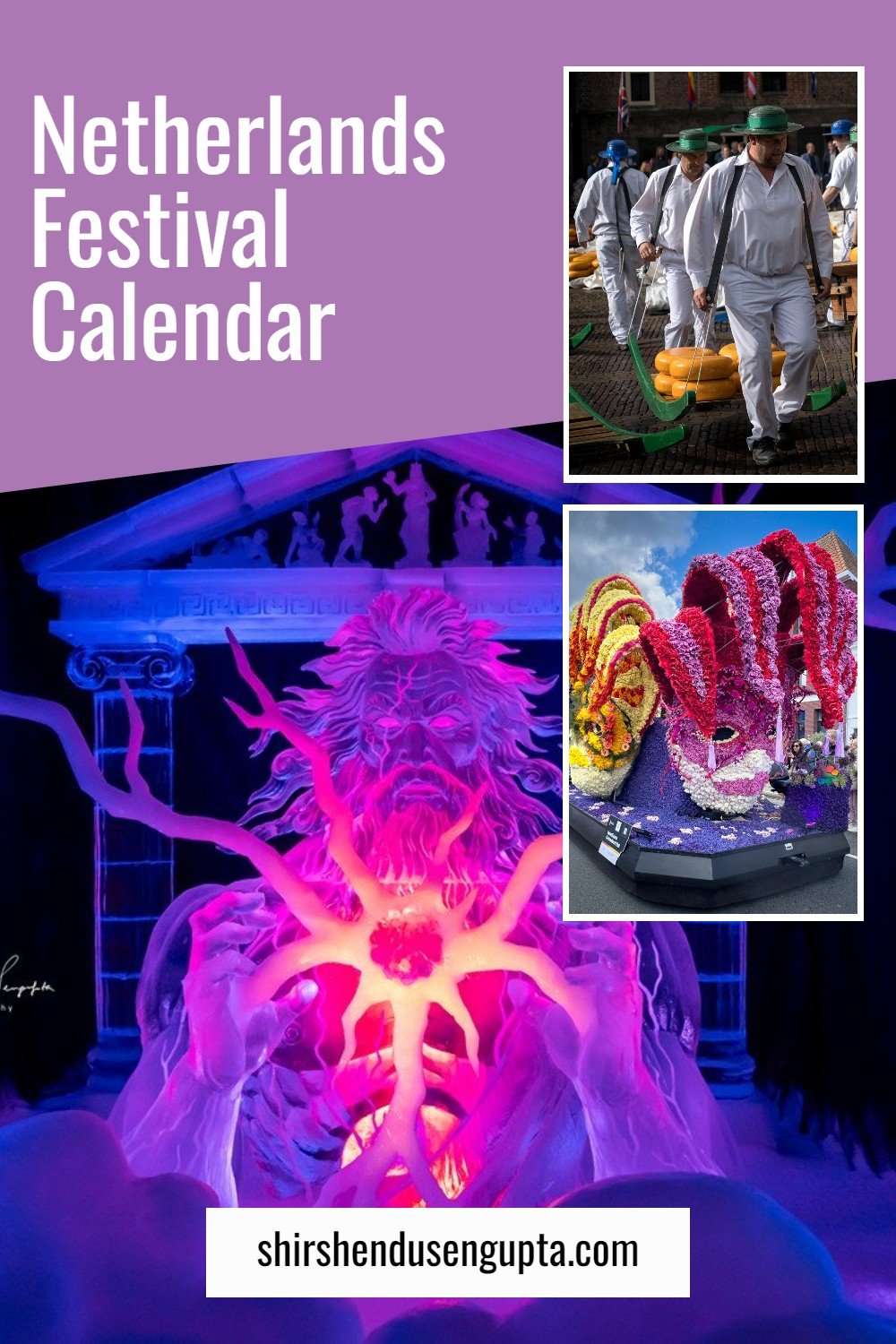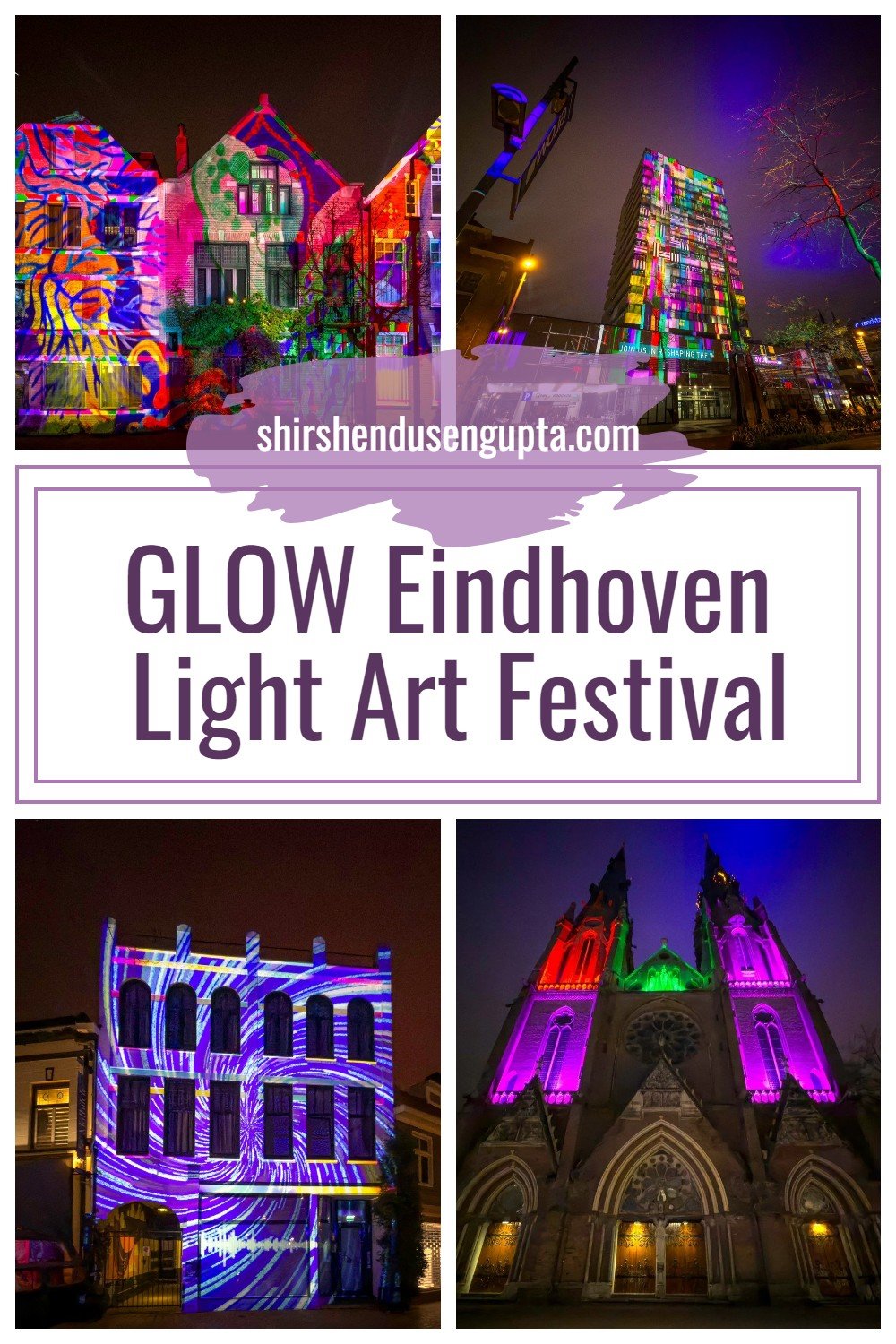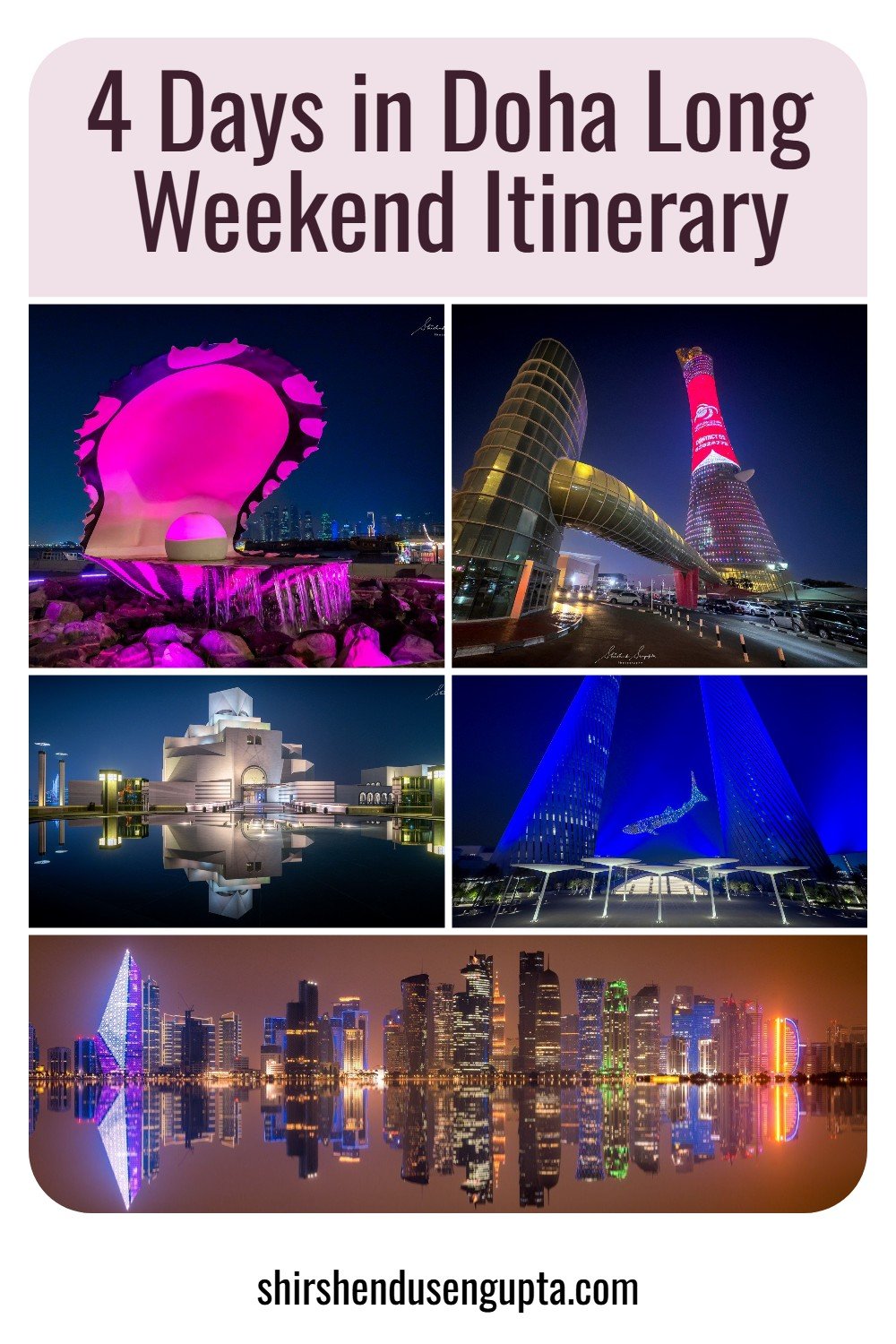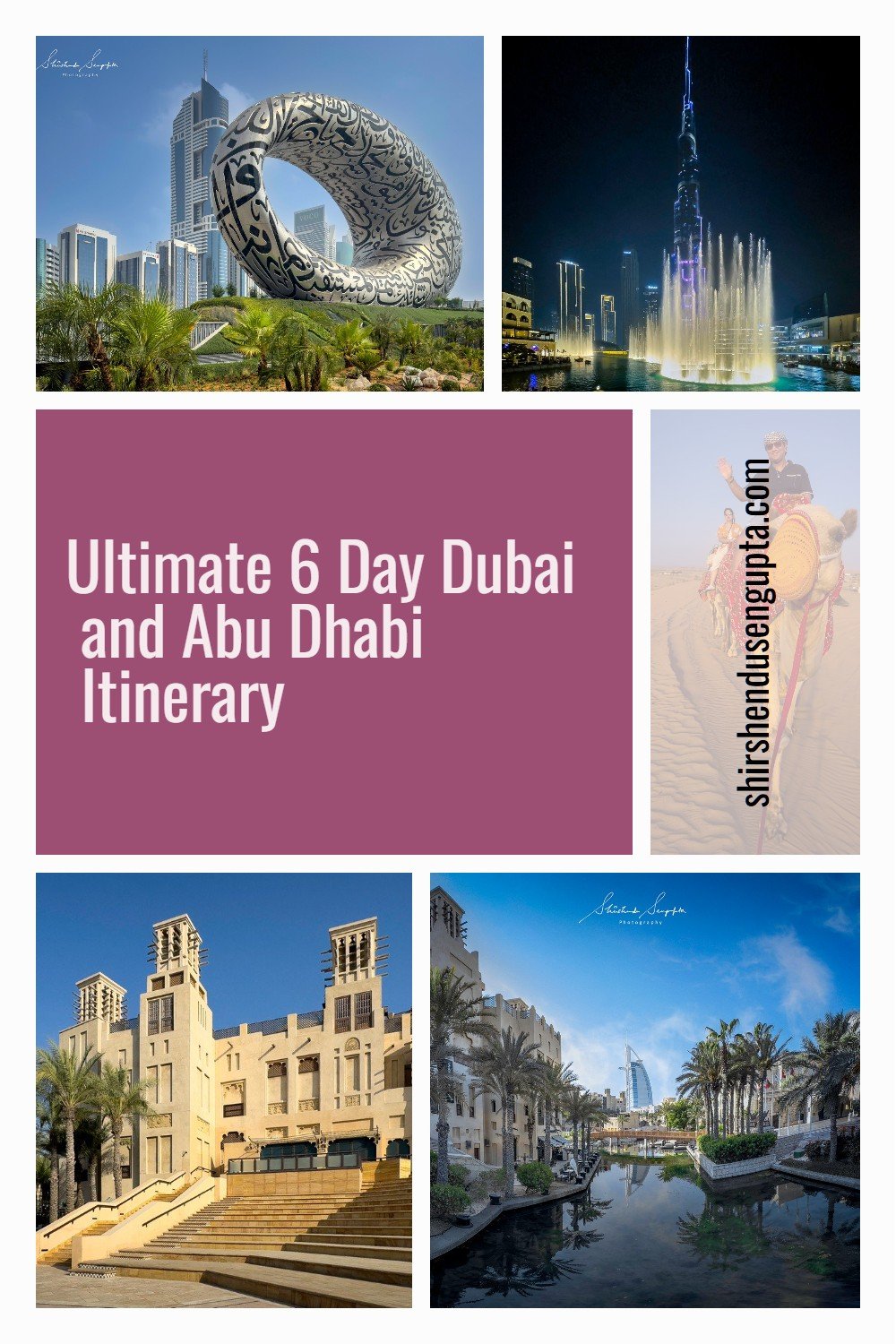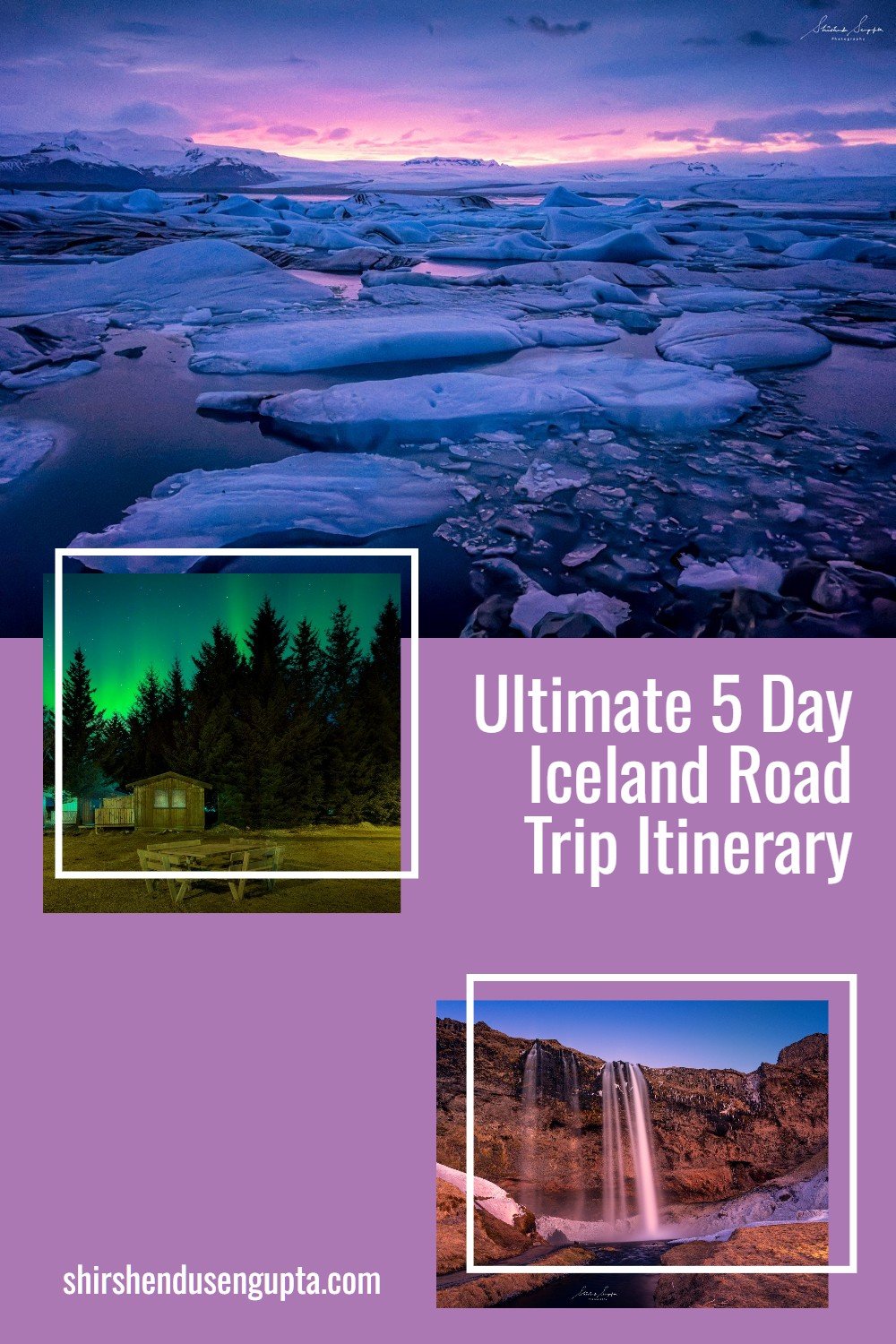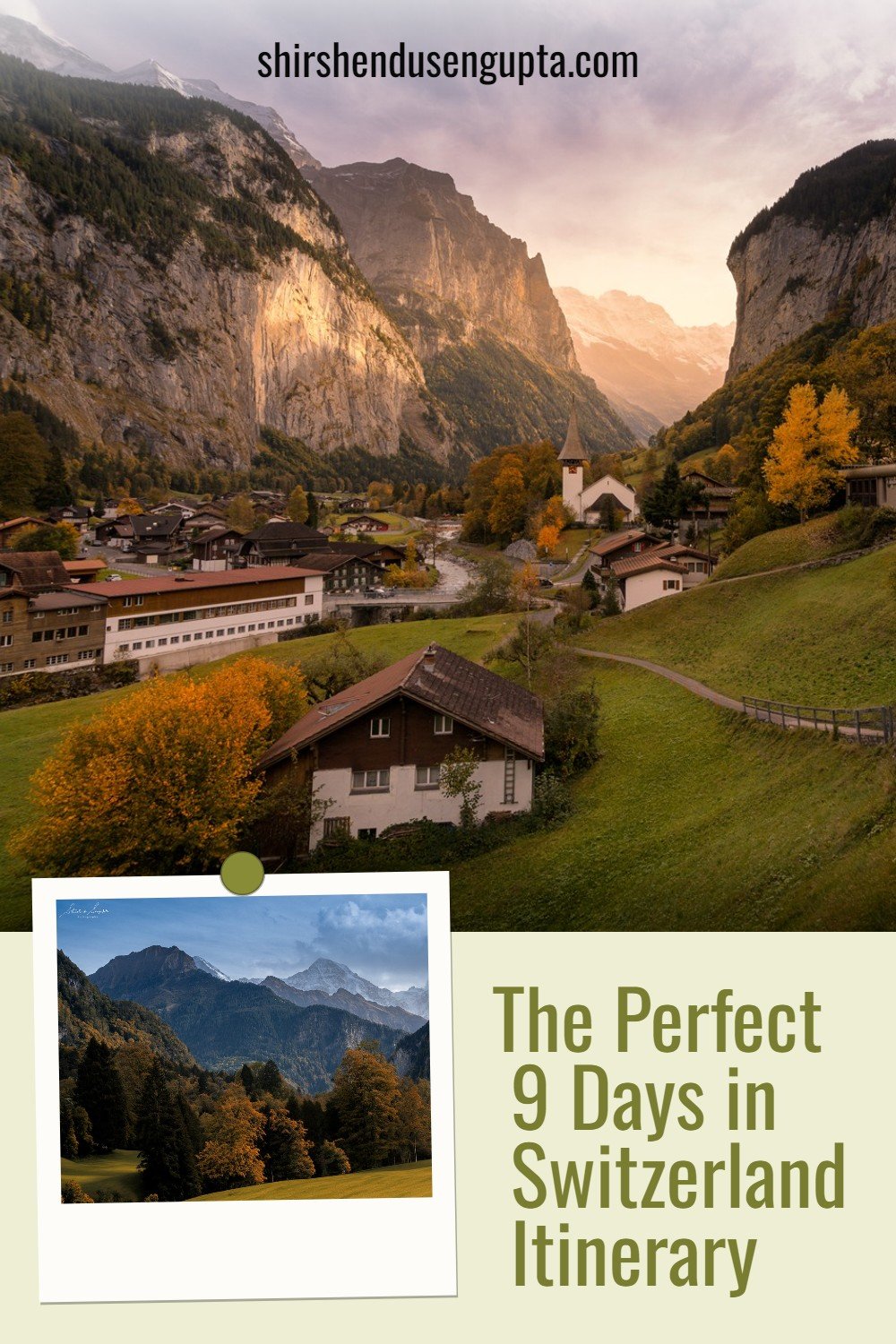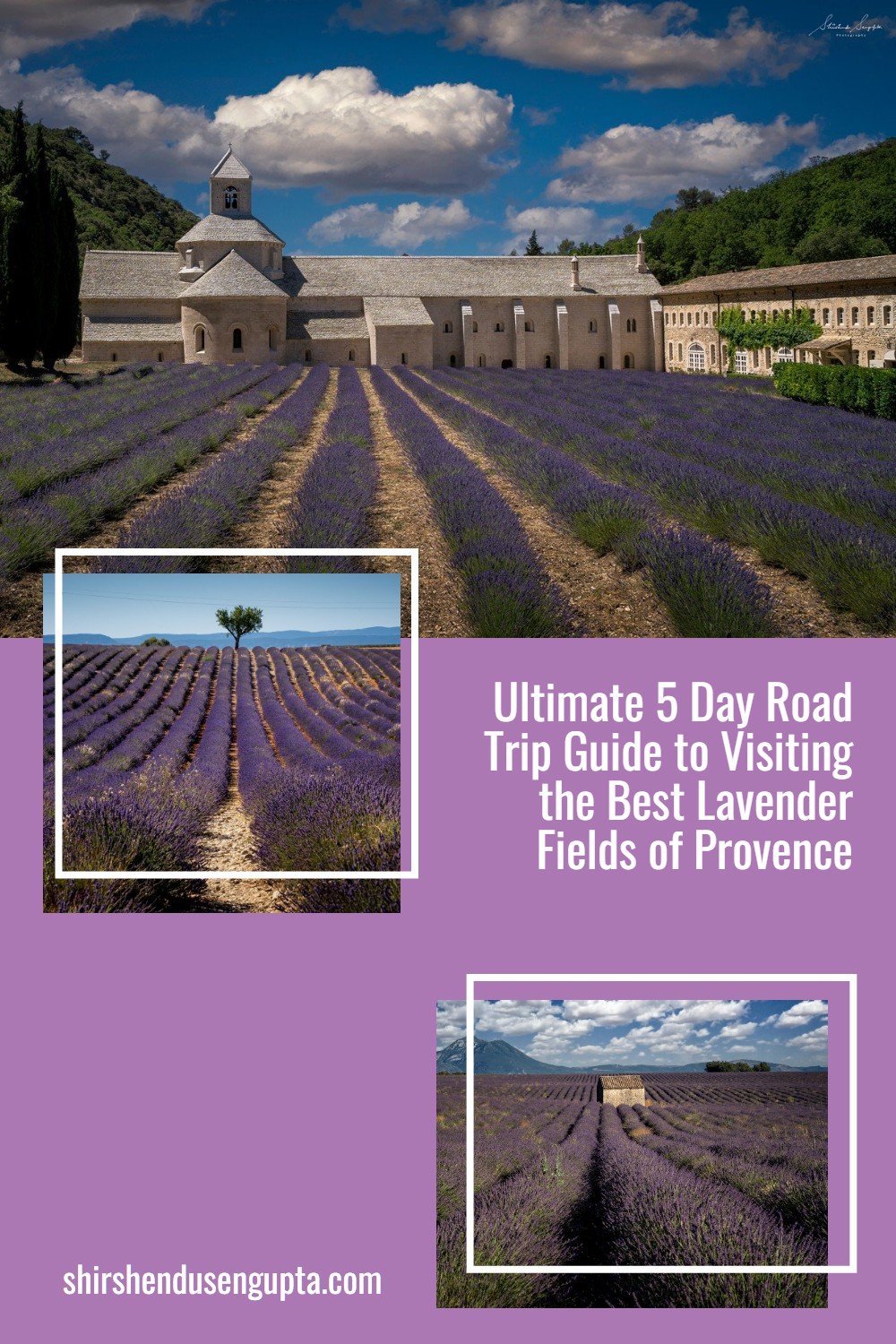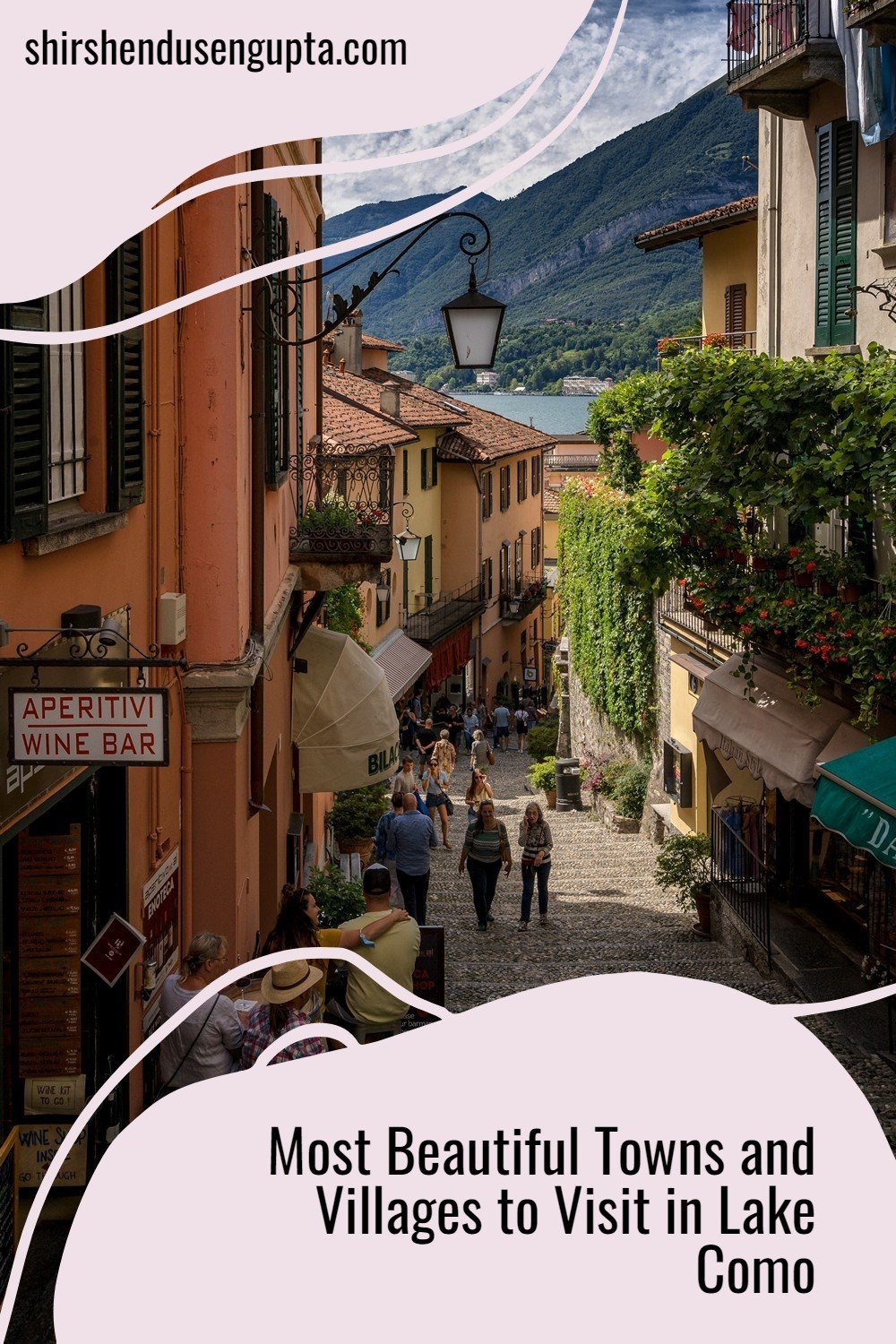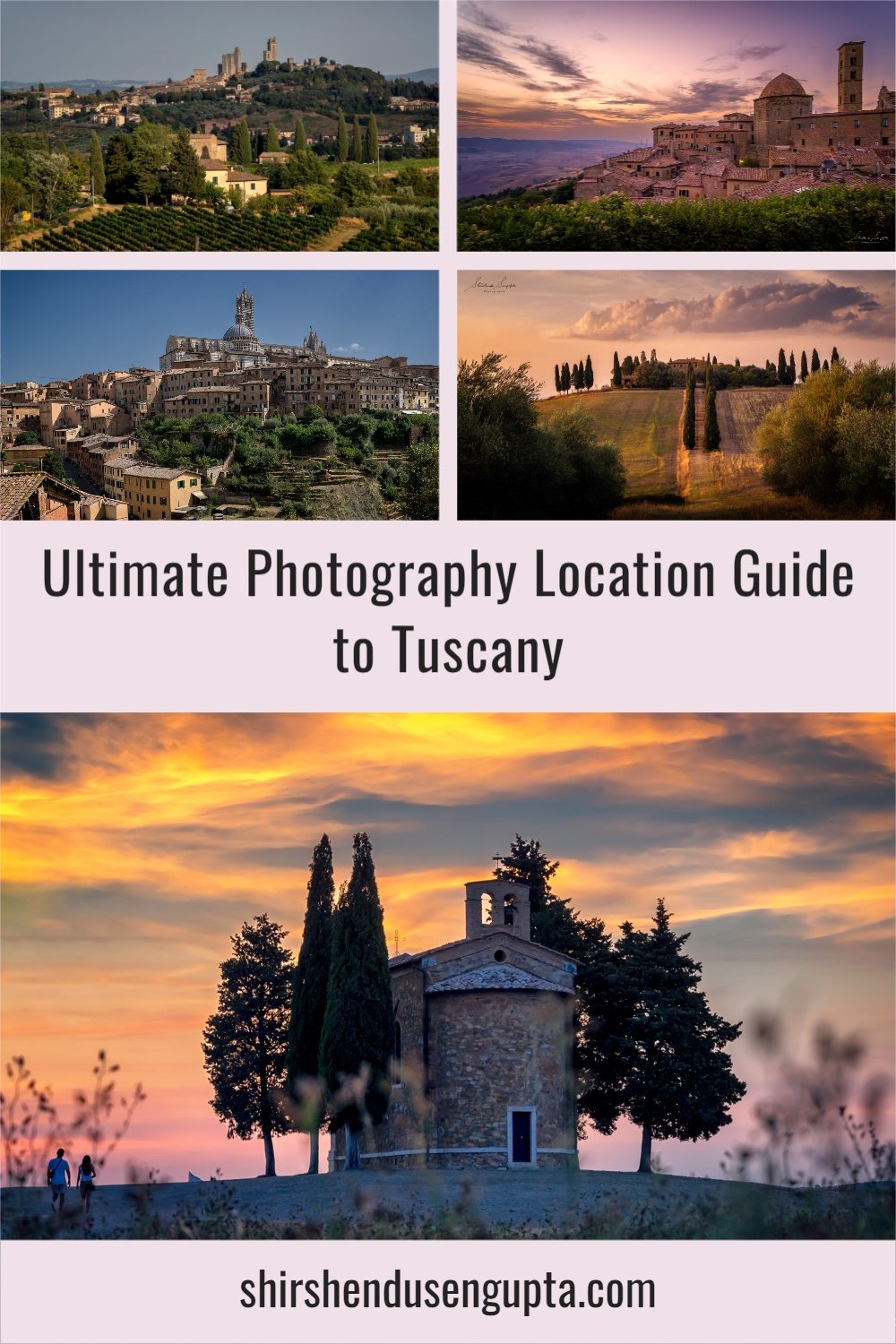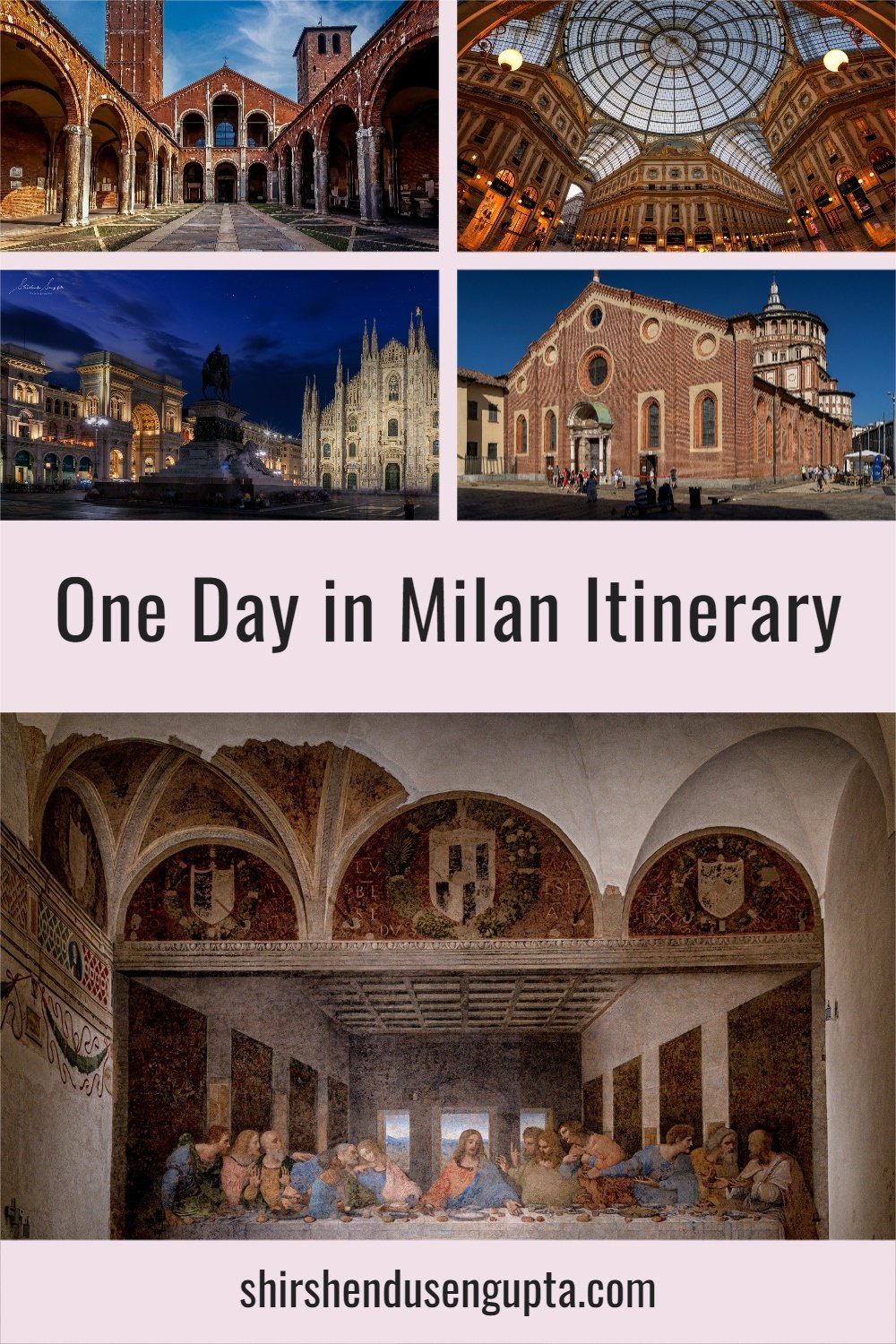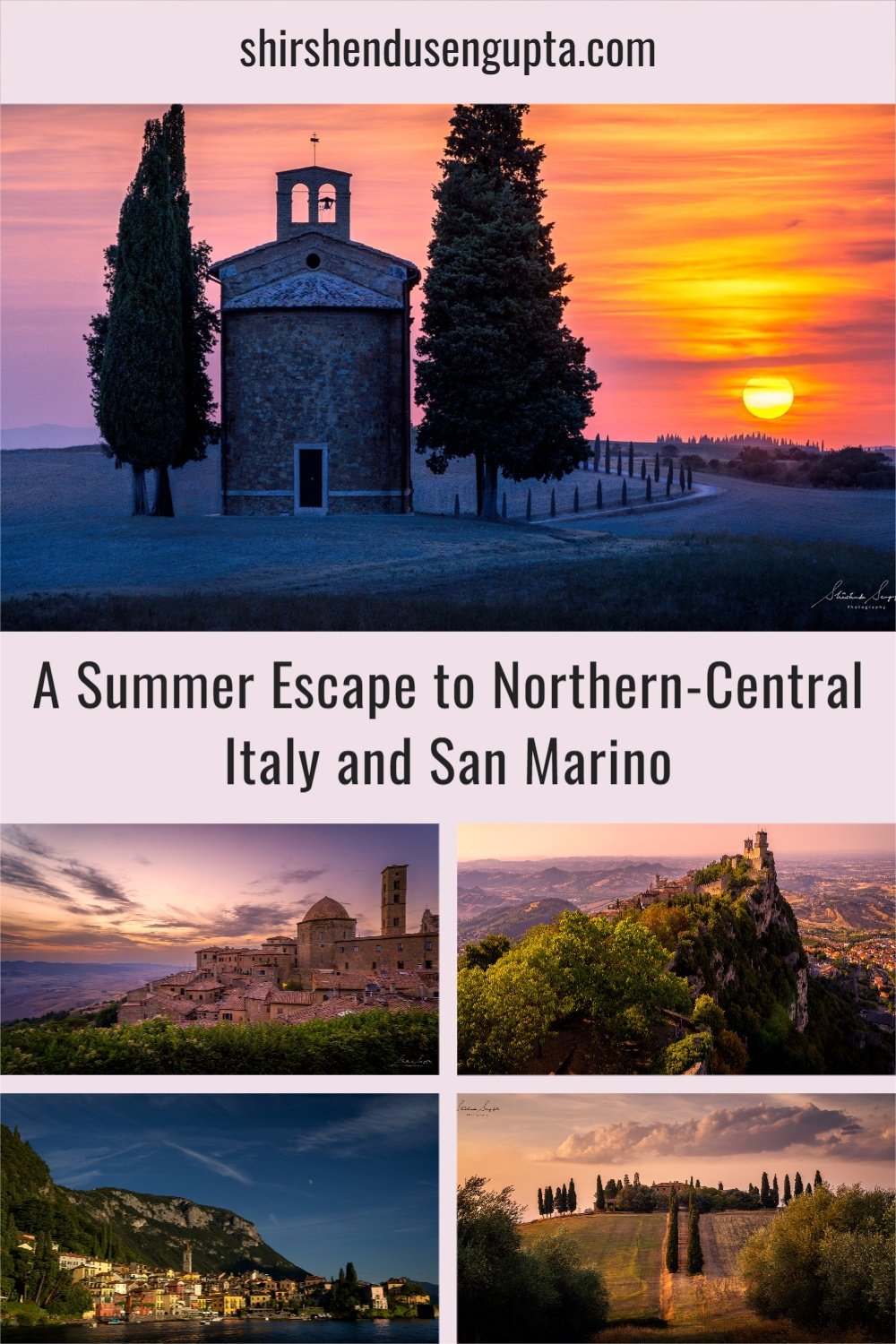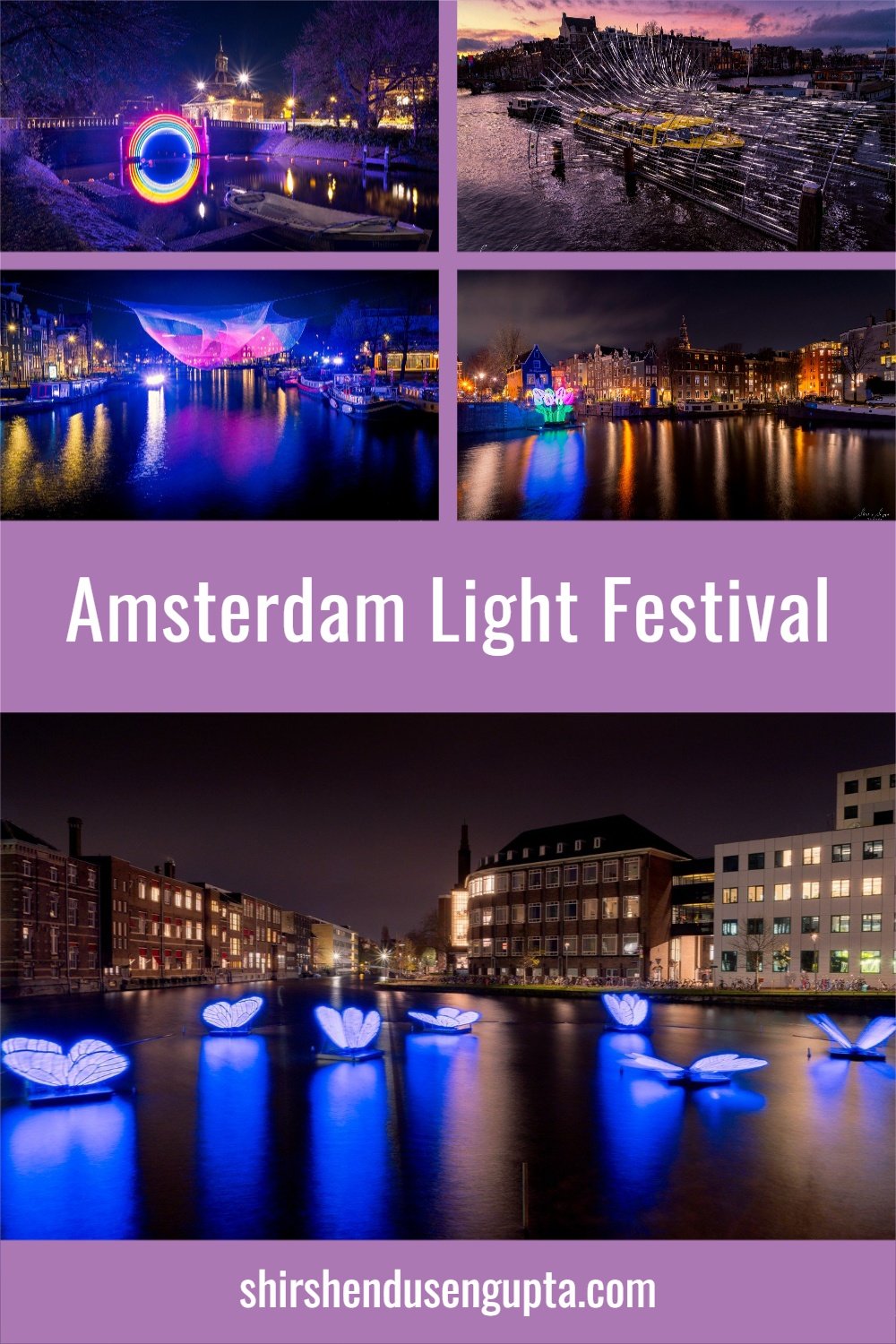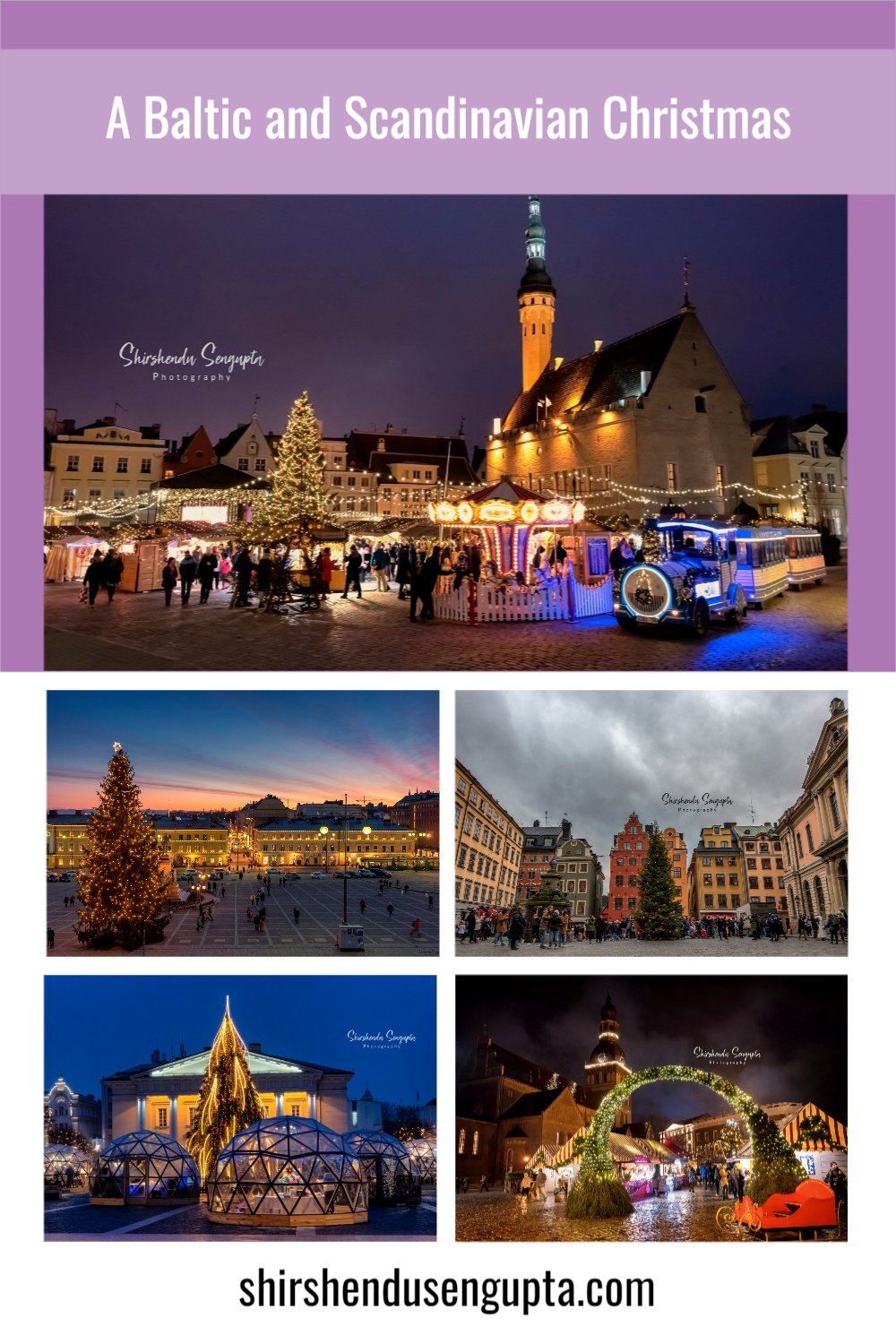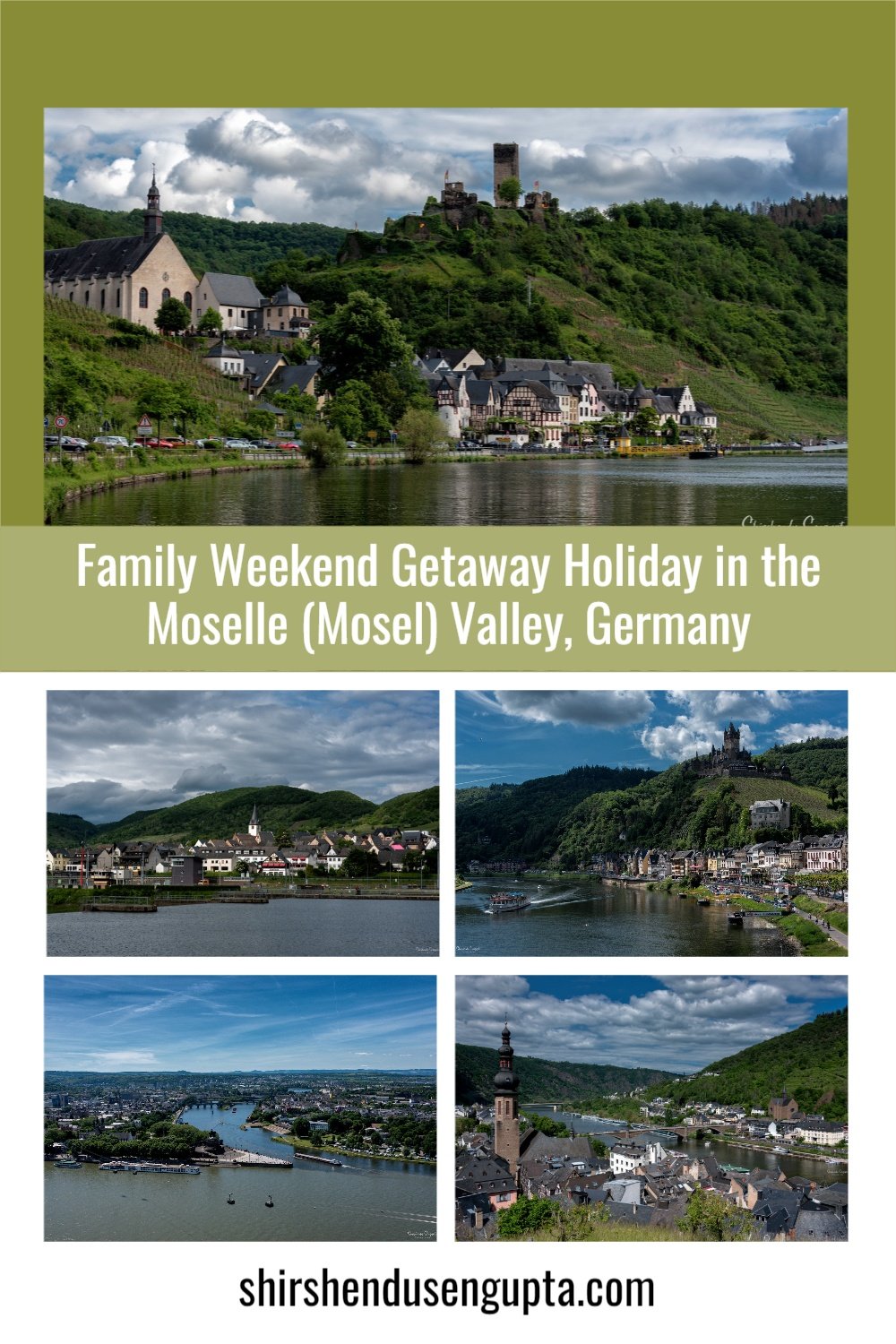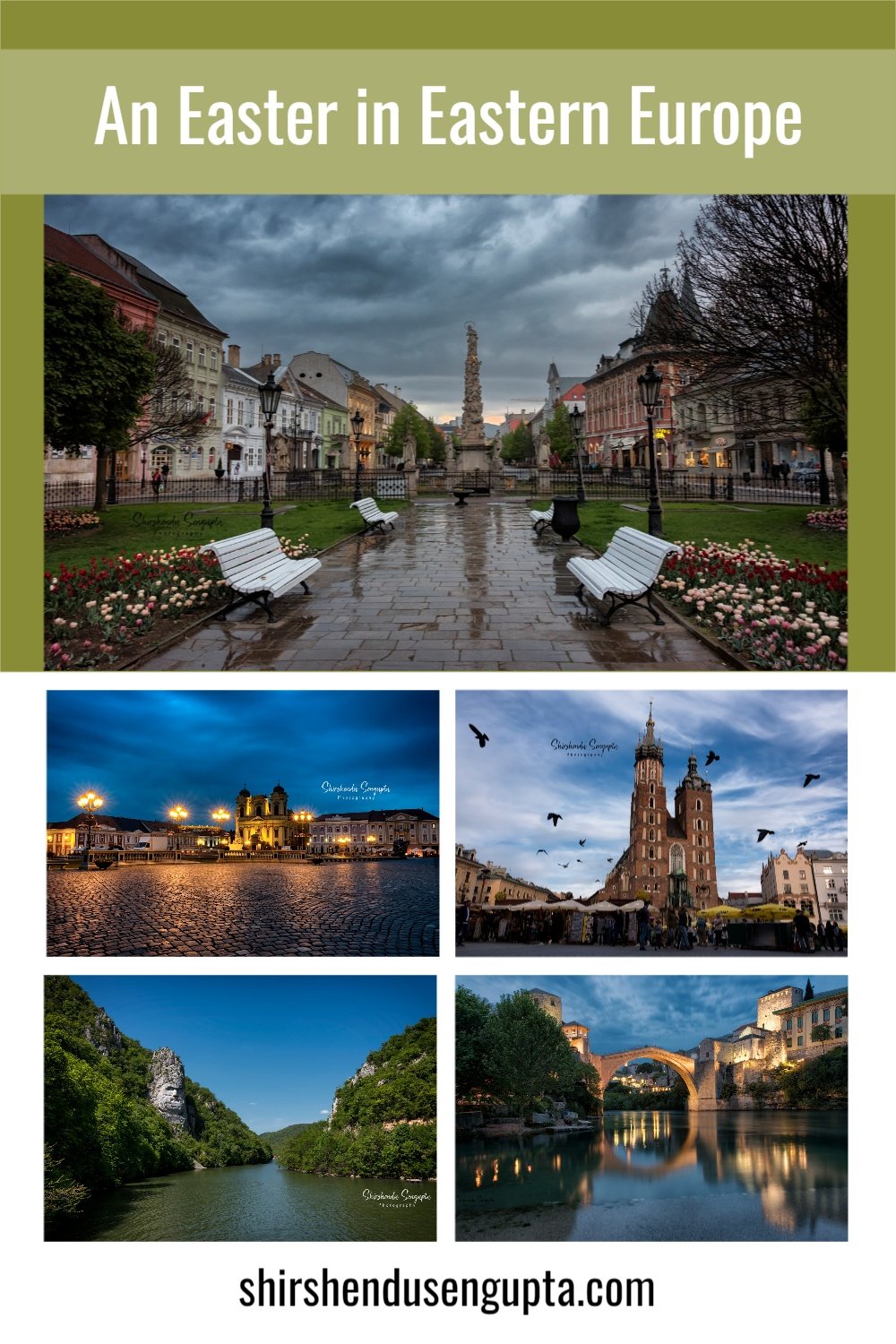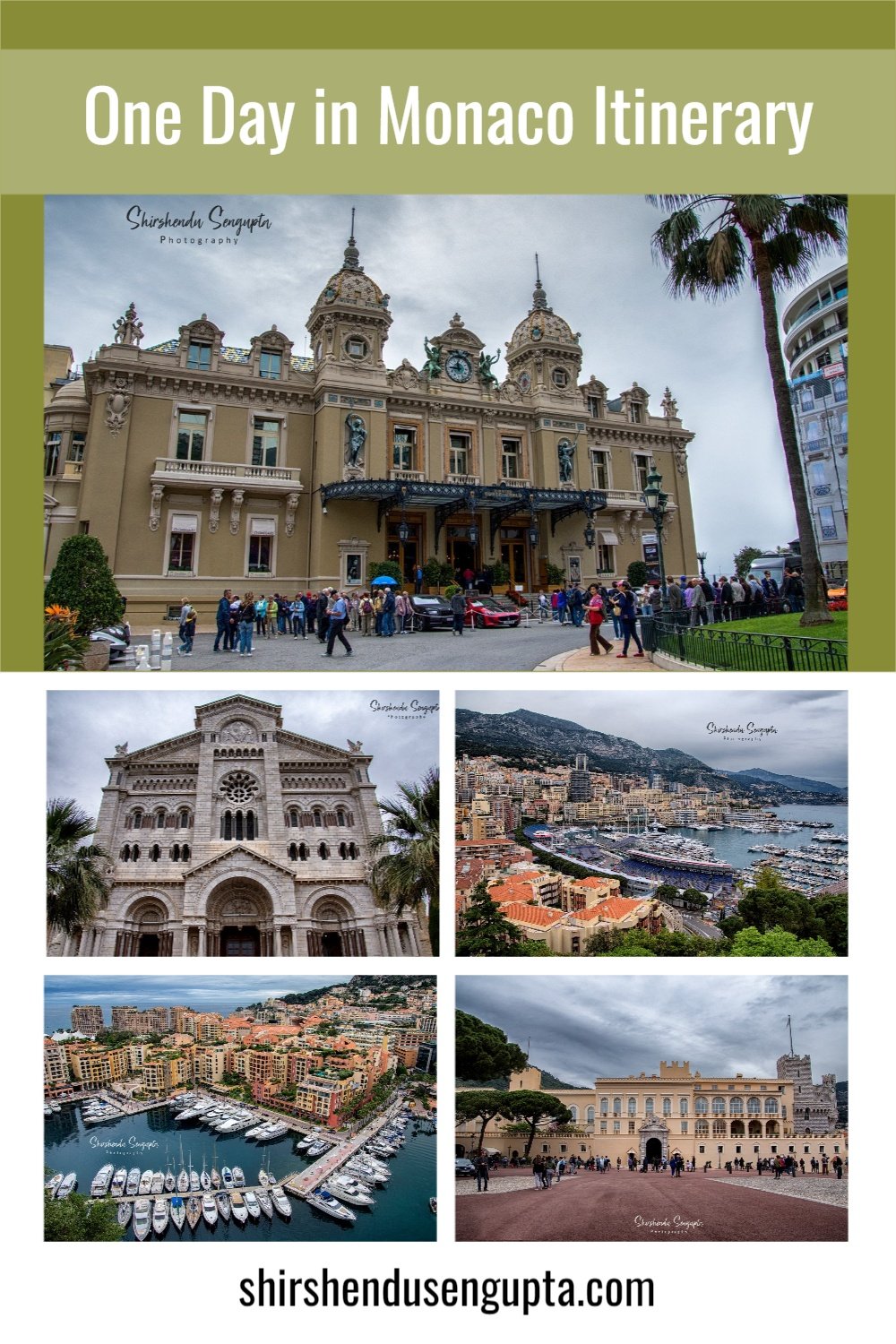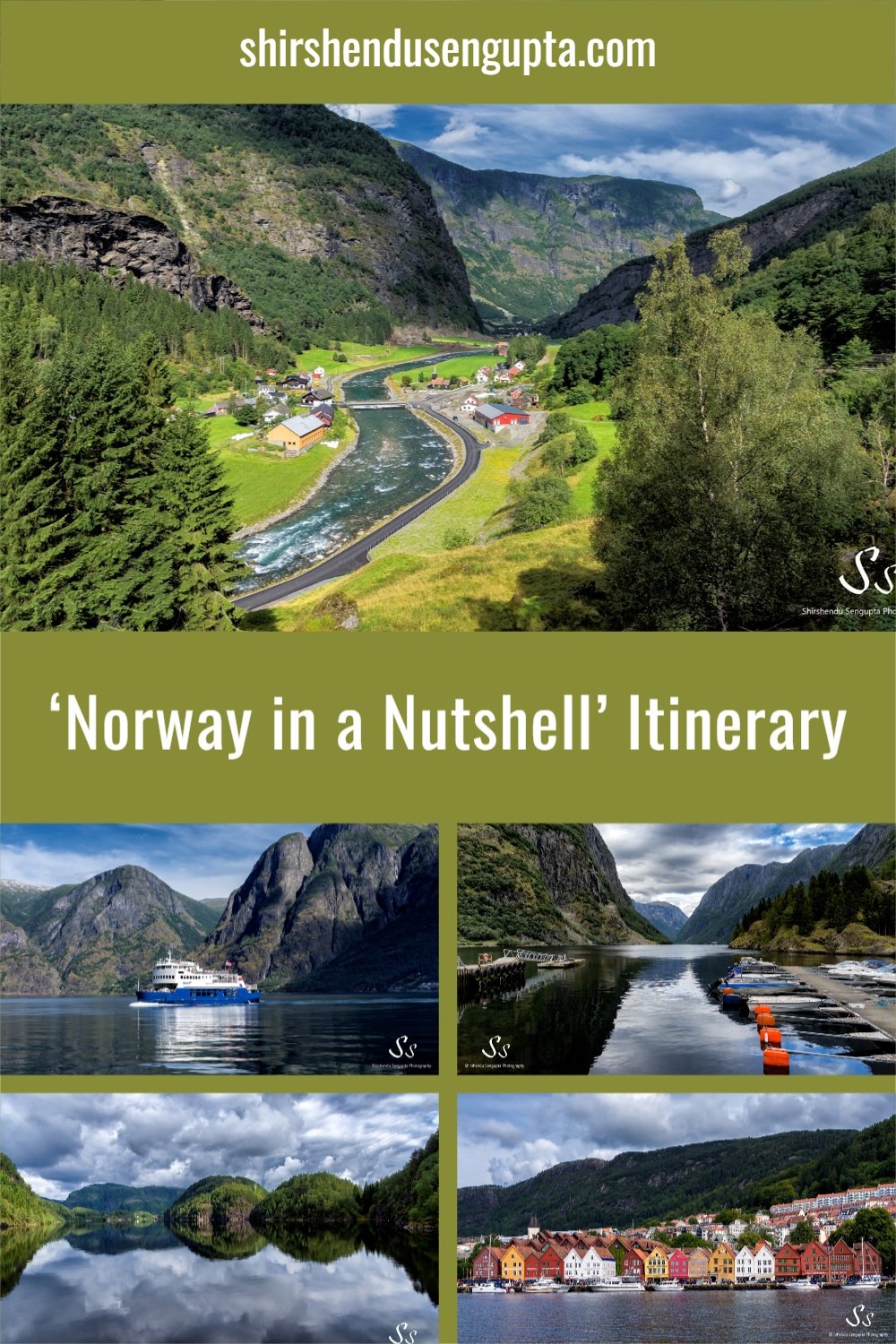A Summer Escape to Northern-Central Italy and San Marino | A 6000 km Road Trip across Milan, Tuscany, Florence, Pisa, San Marino, and Como from the Netherlands | Travel Itinerary, Tips, and Tricks
Prologue
Today I’m going to tell you a summer story - an epic 6000 km road run across Milan, charming Tuscan villages, Florence, Pisa, San Marino, and the picturesque towns along Lake Como, starting from the Netherlands. From sunlit cobbled streets and rolling vineyards to serene lakeside views and historic city squares, every moment was a feast for the senses. With breathtaking landscapes, vibrant local culture, and unforgettable experiences at every turn, this trip will always hold a special place in our hearts. So, without further delay, let the story begin!
The Itinerary
Day 1: Driving from Hoofddorp (the Netherlands) to Milan (Northern Italy)
On the early morning of day 1, we started from our home in Hoofddorp (the Netherlands), and drove 1100 km in 14 hours (including the breaks) to Milan, crossing Germany and Switzerland on the way. Upon reaching Milan, we checked in to our accommodation and slept off.
Day 2: Exploring Milan (Northern Italy)
The next day we set out to explore Milan which turned out to be one of the most memorable days of our lives. The very first thing we did in the morning was to achieve our long-sought dream of visiting the Santa Maria Delle Grazie church for viewing Leonardo Da Vinci’s ‘The Last Supper,’ which is one of the most well-known paintings in the entire world. This piece of art was commissioned by Ludovico Sforza, Duke of Milan, and created by Da Vinci between 1494 and 1498, depicting Jesus and his disciples having their final meal, on an interior wall of the church monks' dining hall (known as a refectory) in the Santa Maria Delle Grazie church, a UNESCO World Heritage site.
The painting has a long history. Da Vinci painted this massive 15 feet by 29 feet masterpiece using tempera and oil on a gypsum preparation directly on the dry wall. Therefore, it isn't technically a fresco (which’s a painting on wet plaster). But since Leonardo painted on a flimsy and humid external wall, the paint didn't stick to the surface adequately. This means that even before the painting was finished in 1498, it had already started to deteriorate and that it had begun to flake as early as 1517. During the Napoleonic Wars, Napoleon's soldiers used ‘The Last Supper’ for target practice with Jesus' face as the bullseye, thereby severely harming the painting. In August 1943, when the Allies began a significant bombing campaign against Milan and its surroundings during World War II, the refectory's walls and the roof were completely destroyed. Only the wall with the painting miraculously survived, perhaps because it had been fortified with sandbags and mattresses. The painting has been since repainted and retouched several times between 1726 and 1999 to restore it to its original glory.
There are also a lot of curiosities and conspiracy theories around the painting. The most prominent is the idea that John, who is seated next to Jesus on his right (our left), is actually Mary Magdalene, who according to recent claims, was the wife of Jesus Christ though it is not mentioned in any of the four gospels of the New Testament. This theory was furthered in the books ‘The Templar Revelation’ (1997) by Clive Prince and Lynn Picknett, ‘The Holy Blood and the Holy Grail’ (1982) by Michael Baigent, Henry Lincoln, and Richard Leigh as well as the novel ‘The Da Vinci Code’ (2003) by Dan Brown. They maintain that ‘The Last Supper’ is crucial proof of the Roman Catholic Church's cover-up of Christ's true identity. The truth is that these puzzles and mysteries remain unsolved but they also make the painting intriguing to visit.
After visiting ‘The Last Supper,’ we went around to see Basilica of Sant' Ambrogio, Tempio della Vittoria (Temple of Victory), San Maurizio church, Castello (Castle) Sforzesco where Ricky wasn’t ready to come out of the fountain after even an hour, the Brera neighborhood, the Piazza della Scala, the Galleria Vittorio Emanuele II (the oldest shopping mall in the world), and finally the much famed Milan Cathedral (third largest cathedral in the world), its terrace, crypt, and the baptistry.
To know more about these places in detail, please read our article One Day in Milan Itinerary | 9 Best Places to Visit and Things to Do in Milan in One Day | Top 9 Must See Tourist Attractions in Milan on a Day Trip. And to know more about visiting ‘The Last Supper’ with tips and tricks, please read our article Complete Guide to Visiting Leonardo da Vinci’s ‘The Last Supper’ at Santa Maria Delle Grazie Church in Milan, Italy | Everything You Need to Know to Visit ‘The Last Supper’ | Info, Tips, and Tricks.
Day 3: Driving from Milan (Northern Italy) to Siena (Central Tuscany), and then exploring Siena (Central Tuscany)
The next morning we checked out from our hotel in Milan early and drove around 370 km to reach the charming medieval town of Siena in the central part of the Tuscany region, which is in turn located in Central Italy, in roughly 5 hours around lunchtime. We chose Siena as our base for exploring Tuscany as it is the central point of the Tuscan region. After checking in to the hotel, we freshened up and headed straight to the central square of Siena namely Piazza del Campo on foot for lunch in a local tavern.
After lunch, we visited the Palazzo Pubblico (Siena’s Town Hall that houses the Civic Museum) and its campanile or bell tower named Torre del Mangia (Tower of Mangia), both situated in Piazza del Campo itself, followed by a visit to the beautifully designed Gothic cathedral Duomo di Siena (Siena Cathedral), adorned with sculptures by Pisano, Donatello, and Michelangelo as well as frescoes by Pinturicchio, situated in an adjacent square named Piazza del Duomo at a walking distance of 5 minutes. After visiting these monuments, we decided to spend the rest of the evening strolling leisurely through the narrow winding lanes of Siena taking pictures and buying souvenirs.
To know more about Siena, and the best photography spots there (including GPS locations), please read our article Ultimate Photography Location Guide to Tuscany | Top 37 Instagram Photo Spots in Tuscany | 37 Best Places to Visit in Tuscany, Italy.
Day 4: Exploring San Gimignano and Volterra (Western Tuscany)
The next morning, we set out to explore a couple of towns in western Tuscany, around 55 km west of Siena namely San Gimignano, a tiny walled town well-known for its amazing medieval towers that soar above all the other buildings providing a stunning perspective of the city from the surrounding valley and Volterra, a hilltop town with its history dating back to fourth century BC, owing to which significant buildings and ruins from the Etruscan, Roman, and medieval periods can still be found there. We explored Volterra until late evening and captured a stunning sunset from the Punto Panoramico (panoramic viewpoint). After that we had dinner, and drove back to our hotel in Siena via serpentine mountain roads with hairpin turns amidst pitch darkness.
To know more about San Gimignano and Volterra, and the best photography spots there (including GPS locations), please read our article Ultimate Photography Location Guide to Tuscany | Top 37 Instagram Photo Spots in Tuscany | 37 Best Places to Visit in Tuscany, Italy.
Day 5: Exploring Montepulciano, Monticchielo, Pienza, Montalcino, Val d'Orcia (Southern Tuscany)
We spent the next whole day amidst the hairpin serpentine roads of the UNESCO World Heritage Tuscan valley of Val d'Orcia while exploring several Tuscan towns namely Montepulciano, Pienza, Montichhielo, and Montalcino along the way. Witnessing winding avenues leading to the Tuscan farmhouses, cypress groves, the House of Maximus from the Hollywood movie Gladiator, and a stunning sunset in front of the UNESCO World Heritage Chapel Vitaleta which’s one of the most photographed churches in the world, we got our share of the Tuscan valleys.
To know more about Montepulciano, Monticchielo, Pienza, Montalcino, Val d'Orcia, and the best photography spots there (including GPS locations), please read our article Ultimate Photography Location Guide to Tuscany | Top 37 Instagram Photo Spots in Tuscany | 37 Best Places to Visit in Tuscany, Italy.
Day 6: Exploring Pisa and Florence (Northern Tuscany)
The next morning we drove 125 km north of Siena to the city of Pisa in about 1.5 hours to visit its iconic clock tower more commonly known as the ‘Leaning Tower of Pisa,’ which was once a wonder of the world. We visited the Battistero di San Giovanni (Baptistry of St. John), Duomo di Pisa (Pisa Cathedral), Composanto (cloistered cemetery), and of course the Leaning Tower of Pisa all located within the same Pisa Cathedral Complex. We had visited Pisa and Florence earlier, but my son Ricky was one year old at that point in time. So I wanted to visit these places once again to quench his thirst for history. We spent the whole afternoon there, but since it was a burning hot day with temperatures soaring above 42 degrees Celsius, we decided to skip the queue to climb the Leaning Tower which itself has 251 steps and no elevator (we had actually done it earlier) and drove 90 km eastwards to the historic city of Florence, the city of Michelangelo (and his statue David, arguably the most beautiful statue in the world), Dante, Galileo, Marconi, Botticelli, Machiavelli, and many other great souls, to spend the rest of the evening there.
In Florence, we visited Palazzo Vecchio (the town hall of Florence that houses a museum named Museo dei Ragazzi) that overlooks the large square named Piazza della Signoria, which houses a replica of Michelangelo’s David, the Neptune Fountain by Bartolomeo Ammannati, and Loggia dei Lanzi (an arched open building with statues like Perseus with the head of Medusa by Cellini, Rape of Polyxena by Pio Fedi, Rape of the Sabine Women by Giambologna, and Hercules and the Centaur Nessus by Giambologna, to name a few). After that we visited the famous bridge with shops named Ponte Vecchio situated on the Arno river, followed by shooting a stunning sunset with the enormous Duomo (Florence cathedral), the Ponte Vecchio bridge, the Boboli Gardens, and the Arno river in frame from the panoramic viewpoint of the Piazzale Michelangelo square which overlooks the skyline of Florence and holds another bronze replica of Michelangelo’s David. After that, we had dinner at a restaurant in Piazzale Michelangelo and drove back to Siena.
To know more about the best places to visit and things to do in Florence and Pisa, please read our article 17 Best Places to Visit and Things To Do in Florence and Pisa | Top 17 Must See Tourist Attractions in Florence and Pisa, Tuscany, Italy.
Day 7: Exploring Florence (North Tuscany)
The next day we drove back to Florence, this time directly from Siena (75 km) very early in the morning to the Accademia Gallery, where we had a reservation to visit the ‘original’ David of Michelangelo, which was another dream come true (for Ricky since we had seen it already when we visited Florence earlier), followed by the Uffizi Gallery which houses the Madonna series by Raphael, Giotto, Filippo Lippi, and Botticelli, the imposing Duomo (Florence Cathedral) and Battistero di San Giovanni (Baptistry of St. John) situated at the Piazza del Duomo square, and finally ending up with the Basilica di Santa Croce where all great sons of Florence like Michelangelo, Galileo, Guglielmo Marconi, Ugo Foscolo, Rossini, Machiavelli, Niccolini, Capponi and laid to rest. It also houses the funerary monument of Dante since his body was not allowed to be brought back to Florence.
To know more about the best places to visit and things to do in Florence and Pisa, please read our article 17 Best Places to Visit and Things To Do in Florence and Pisa | Top 17 Must See Tourist Attractions in Florence and Pisa, Tuscany, Italy.
Day 8: Exploring San Marino (A separate country in Central Italy)
The next day we did a day trip from Siena to San Marino driving 450 km back and forth. San Marino is a mountainous micro country situated within the borders of Italy. So it’s like a country within a country. Among the world’s oldest republics, it retains much of its historic architecture. On the slopes of Monte Titano sits the capital, also called San Marino, known for its medieval walled old town and narrow cobblestone streets.
Once we reached the foothills of San Marino through serpentine roads, we parked our car there and took the cable car to the clifftop country. I must stay, San Marino, quite unexpectedly impressed me. Though it is extremely small and has less to offer, the ramparts of the citadels offer panoramic views of the country, the streets offer ample shopping opportunities and the country itself has a laid-back, casual and charming aura. Especially the restaurants are extravagant. I recommend it to everyone who is traveling to Tuscany or other parts of northern or central Italy.
To know more about the best places to visit and things to do in San Marino, please read our article Ultimate San Marino Day Trip Itinerary | 10 Best Places to Visit and Things To Do in San Marino in One Day | Top 10 Tourist Attractions to Visit in San Marino on a Day Trip.
Day 9: Driving from Siena (Central Tuscany) to Varenna, Lake Como (Northern Italy) via Menaggio, Lake Como (Northern Italy)
The next morning we checked out from our accommodation in Siena, and drove 550 km to our final stop for this trip at Lake Como through hairpin serpentine lanes. Lake Como is an inverted ‘Y’ (or ‘lambda’ for science students) shaped lake with magical towns along its coast. We had made our base on the outskirts of the most beautiful town Varenna. But before reaching our accommodation, we first arrived at the town Menaggio, stayed there until sunset, and then sailed with our car to Varenna, and drove to our accommodation on the outskirts of Varenna.
To know more about the best places to visit around Lake Como, please read our article 5 Most Beautiful Towns and Villages to Visit in Lake Como.
Day 10: Exploring Varenna and Bellagio, Lake Como (Northern Italy)
The next day, we explored the crown jewel towns of Varenna and Bellagio on lake Como. The plan was to drive to the center of Varenna in the morning, the town in whose outskirts we were put up, then park the car, explore Varenna, and later take the passenger ferry to Bellagio in the afternoon. However, to our surprise, ‘all’ street parkings and parking garages across the town of Varenna were full right from 9 AM. So we had to take the car ferry and sail to Bellagio first, and then return to Varenna in the evening when parkings became available. We did not expect these towns to be so touristy, especially during the pandemic. It is a learning for us which I will elaborate in the tips and tricks section later in this article. Anyway, coming back to Lake Como and the towns, there are idyllic and are must visits. But you must watch out for tourist traps, which I’ve also elaborated in the tips and tricks section below.
To know more about the best places to visit around Lake Como, please read our article 5 Most Beautiful Towns and Villages to Visit in Lake Como.
Day 11: Exploring Como City, Lake Como (Northern Italy)
Drove 60 km northwards to reach the city of Como on whose name the Lake of Como has been named. For all my fellow Electronics and Communications engineer fraternity, Como is the city where Alessandro Volta lived, so this city is like a pilgrimage for us. For the uninitiated, Alessandro Volta invented the first Voltaic cell or the battery and is known to be the father of commercial electricity. The term ‘Voltage’ represents the potential difference between two points or the unit of potential difference itself which is ‘Volt’ is named after him. So next time you touch that power socket bare feet and get a 220 ‘Volt’ shock, you are basically paying homage to him.
So in Volta’s city Como, you can find the central square named after him ‘Piazza Alessandro Volta’ with his statue holding the first ever battery made by mankind. You can also view this first battery made by him in the Volta Museum in Como. Apart from that, we saw the Como cathedral which is monumental compared to other cathedrals in similar-sized cities, the Porta Torre (Tower Gate), took a funicular to the top of the mountain to get panoramic views of Lake Como, and finally ate Como’s authentic smoked Salmon cuisine (5% Salmon and 95% leaves). All in all, it was a tiring but well-spent day.
To know more about the best places to visit around Lake Como, please read our article 5 Most Beautiful Towns and Villages to Visit in Lake Como.
Day 12: Driving from Varenna, Lake Como (Northern Italy) to Hoofddorp (the Netherlands)
Finally came back to Hoofddorp (the Netherlands) driving 1100 km from Varenna, Lake Como (Northern Italy) in around 14 hours (with breaks).
Info, Tips, and Tricks
1. Plan for visiting ‘The Last Supper’ in advance
If you happen to visit Milan and suddenly feel like seeing ‘The Last Supper,’ you cannot simply turn up to visit the Santa Maria Delle Grazie church as you can do for visiting the Louvre Museum in Paris to see Da Vinci’s Monalisa. You have to book your viewing slot months in advance. When we visited Milan a few years back, we could not get a slot while trying to book even 4 months in advance. Luckily this time we tried booking just a month in advance and got our 15-minute viewing slot at an actually lesser cost as a European Passport holder. When we were there we saw many people who didn’t have a booked slot being returned and told to come back in a month as all viewing slots were booked for a month. Before entering, our bags were kept in a locker and then we were let in for a 15-minute viewing slot into the room that was very dark and hence taking pictures was not easy.
To know more about visiting ‘The Last Supper’ with tips and tricks, please read our article Complete Guide to Visiting Leonardo da Vinci’s ‘The Last Supper’ at Santa Maria Delle Grazie Church in Milan, Italy | Everything You Need to Know to Visit ‘The Last Supper’ | Info, Tips, and Tricks.
2. Choose the right base for exploring Tuscany
I know many people who stay in different hotels across the Tuscan region to cover the different parts. But if you choose a base location diligently that is central to the Tuscan region, trust me, you can cover the length and breadth of Tuscany by car just from one location. And for that, the best area is either Florence or Siena. I recommend Florence if you have never been to Florence before as there’s plenty to see in Florence. But if you have been to Florence before like us, I would recommend you to base yourself in Siena since it is more central to the different hilltop Tuscan villages and accommodation is much cheaper than that in Florence.
3. Choose your hotel wisely at Lake Como
Lake Como is one of the nastiest places in Italy when it comes to hotel prices and parking nightmares. Since we had planned this trip much later than usual, the most affordable hotels on the waterfront were already booked. So we were left with 2 choices - either book a ridiculously expensive hotel on the waterfront or stay somewhere on the outskirts of one of the towns around Lake Como. So we decided to stay just outside the most beautiful town of Varenna and the plan was to drive to the center of Varenna the next morning, park the car, explore Varenna, and later take the passenger ferry to Bellagio in the afternoon. However, to our surprise, ‘all’ street parkings and parking garages across the town of Varenna were full right from 9 AM. So we had to take the car ferry and sail to Bellagio first and then return to Varenna in the evening when parking became available. Even in Bellagio we struggled to find street parking and finally, I decided to park on a spot that was only meant for locals living there. I just took a chance as it was too late for lunch and my son was too hungry. We did not expect these towns to be so touristy, especially during the pandemic but then I was told this is the case 365 days a year. So the learning here that I want to share with you is that Lake Como is one of those places where paying more money (if you are late with your bookings) to get a hotel on the waterfront with parking is worth it. Just leave your car at the hotel and travel on foot within the towns and take the ferry to travel between towns.
4. Do not stay overnight in San Marino
I know that there are many tourist brochures that insist you to stay overnight in San Marino for a ‘lifetime experience.’ But I would advise you against it since San Marino is a small country and by evening most shops, city walls, and towers close. Hence, there’s not much to do after it gets dark. Also, the hotels in San Marino are quite pricey. So I would recommend you to either do a day trip from wherever you are to San Marino or if you do not want to do that, then stay in Rimini (it is in Italy) 35 km away from San Marino where the accommodations are much more affordable.
5. Plan for driving in Italy
Driving in Italy is an experience (especially for those who have never done it). Italian drivers are generally not considered the greatest at maintaining traffic rules to put it gently. So keep an eye on the rearview mirror and be courteous when someone wants to cut sharp corners on serpentine mountain roads to overtake you at 100+ kph. Better is to already indicate to them that you are willing to give way by switching on your right indicator (even if you have the mountain or a forest at your right and there’s no right turn to take). Once they pass they ‘may’ return the courtesy by switching on their hazard lights once (a way to thank a car that’s behind you) if they deem fit.
6. Plan for driving through the Tuscan valleys
If driving in Italy isn’t challenging enough for you (like me), then you have something to look up to - the Tuscan roads. They are not as amazing to drive on as they appear in the pictures. Most of those zigzag cypress-lined roads of the Tuscan valleys are ill-maintained and hence are rugged, broken, and full of potholes. On top of that, the roads continuously twist and turn without light, barriers, or reflectors at the cliff edges, at many places the way leads to dirt roads, and often you might see animals crossing the roads. Hence consider using high beams at night. And during rains, the roads can be extra treacherous and they tend to get muddy and very slippery. So sit back and buckle up for a bumpy and twisty ride.
7. Plan for driving through the smaller hilltop Tuscan towns and villages
Normally you wouldn’t want to drive through the smaller hilltop Tuscan towns and villages as the roads within the towns are generally very narrow and at some places, the width of the road can be the exact width of your car (I call them ‘Mirror to mirror roads’ which means the walls on the sides of the roads are almost touching the side view mirrors of your car on either side). And due to bad luck if you get stuck somewhere (e.g., the road is closed/blocked) especially when you are climbing uphill and you need to reverse back out of the lanes you are in for some interesting experiences. So I would strongly recommend against it. Instead, I would recommend you to park somewhere at the edge of the towns and take your time to explore the towns on foot. Trust me there’s no better thing on earth than getting lost in the labyrinthine maze of the Tuscan villages.
8. Plan for driving without GPS at places
At many places in Tuscan valleys, Google Maps will seldom work since you will not have the internet on 70% of the roadways. An alternative is to store offline Google maps for the places you are planning to travel to the next day once you’re at the hotel at night but to store offline maps for such long distances, Google may ask for memory in your phone that may not be available. So in such situations, use your common sense coupled with street signs and sign language with the locals. It will work like a charm.
9. Plan for driving without online music apps
For people like me who’re seasoned drivers (I drove around 90000 km in the last 2 years) but cannot drive without music and use only online apps like Spotify, download all the music you need for your entire holiday and save on your phone as most of the roadways will hardly have access to the internet.
10. Plan for parking in Tuscany
Since most of the smaller hilltop Tuscan towns and villages are fortified, you will find parking areas outside the town walls (fortifications) where you can park your car and then enter the fortified towns through the town gates on foot. But often you may have to wait to get a free spot since they may be full in the busy months. In bigger cities like Florence, finding street parking amidst mirror to mirror narrow roads can be a harrowing experience and may take an entire day (I’m exaggerating a bit). The best alternative is to research and find a parking garage at your destination upfront before you start driving. And once you reach just hand over your keys and leave it to the parking guys to park your car a kitten’s whisker next to other cars in their jam-packed parking garage. Though I was told that the ‘Bravehearts’ ready to drive in Italy shouldn’t give a damn about a couple of scratches but let me warn you that it can be very scary to see them park your car. That’s the reason I just got out of my Mercedes-Benz, gave them the keys, and left. Sometimes you need to take a giant leap of faith. And when I came back, it was okay. Just a mild smoking smell in my car. That’s it!
11. Take the ferry to travel between towns on Lake Como
There are two ways to travel between the towns on Lake Como - take the ferry or drive around the lake from one town to another. I would very strongly advise you to take the ferry ‘only’ since Como is a big lake and just a single road connecting the towns that can be very trafficky during the busy season. So it may take you hours to reach one town from another while the ferry across the lake may take only 15 minutes. Also you get the best views of the towns from the ferry.
12. Check the ferry timings in advance
If you are traveling between towns by ferry, check the ferry timings in advance to ensure that you are able to catch the last ferry back to your base location. Sometimes the last ferry from some relatively lesser-known towns can be as early as 16:00. So please factor that in your planning.
13. Watch out for tourist traps on the Como waterfront
Let me be straight onto this one. Como is a tourist trap in itself. It is ‘very’ busy during peak season and extremely expensive to stay, go around and eat. I have been to Italy more than 10 times and I think Como is one of the most expensive places to be in Italy. And the most expensive restaurants and shops are on the waterfront (lakeside). So when you are in Como, if you want to eat or shop don’t do it at the lakeside. Instead, go inside and dine/shop in one of the restaurants/shops located on the inner streets. The view may not be that great but it will be worth it.
14. Plan for your health
Let me tell you what nobody tells about Tuscan roads in any of the articles all over the internet, but I find it very important. Since my wife has asthma and I understand the nuances, let me tell you the Tuscan roads can make you sick. If you are allergic to dust, consider carrying anti-allergic medication with you since the Tuscan roads are ‘very’ dry and dusty during summer. If a car passes by you, there’s just smoke of dust everywhere. So all those misty Tuscan landscape sunset images that you see on the internet are not mist but dust. Secondly, due to the rugged and twisty nature of the roads, you may get motion sickness. My son threw up thrice despite being used to traveling since he was 5 months old. Also, the tremendous heat (we got up to 42 degrees Celsius) during the summer adds to the problem. So if you have children with you, I would recommend you to carry motion sickness medication that you get over the counter.
15. Get to the viewpoints ‘very’ early
Make sure to reach popular viewpoints and sunset spots like Piazzale Michelangelo in Florence where you can shoot the panoramic sunset over the Florence skyline at least an hour in advance to get the best spot and set up your tripod. Even all the street parkings may be full if you do not reach before an hour. Before you know it you will find yourself in the middle of 500 people most of whom are drinking, playing music, and dancing. And then, you don’t want to be the spoilsport disturbing the party. So go early!
16. Get a wide-angle lens or use panorama to shoot architecture
Some architectural monuments in Tuscany are massive like the Duomo di Firenze, and you may not have a lot of space to move back to get the entire monument in the frame. Hence I recommend you to get a wide-angle lens with you or use panorama as I do.
17. Carry the supermarket with you
In many of the remote villages in Tuscany, it’s challenging to find big supermarkets. Only in bigger cities like Florence, you can find large supermarkets. To get a large-sized supermarket ask your accommodation to provide you with a list of supermarkets nearby with their addresses and telephone numbers. Also, inquire about their closure timings. Once you are at the supermarket, convert the booty of your car into a mini mobile supermarket.
Epilogue
So that brings us to the end of our ‘A Summer Escape to Northern-Central Italy and San Marino’ journey. Please let us know in the comments below if you enjoyed reading this article. And until we meet next time, I wish you merry traveling and happy shooting!
Pin the article
Bookmark the article for reading later!
Want to license/buy photos in the article?
License photos for commercial/editorial use or buy photo prints!
Want us to write an article for you?
Articles for magazines, newspapers, and websites!
Watch our Videos
Check out our videos on our Youtube Channel!
Join the Newsletter
Get updates on our latest articles!
We respect your privacy. Read our policy here.



